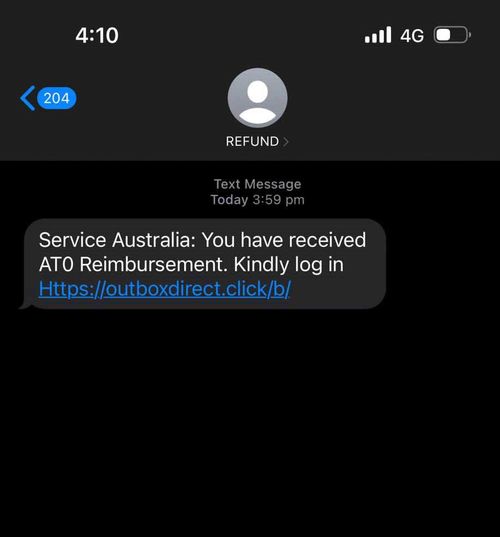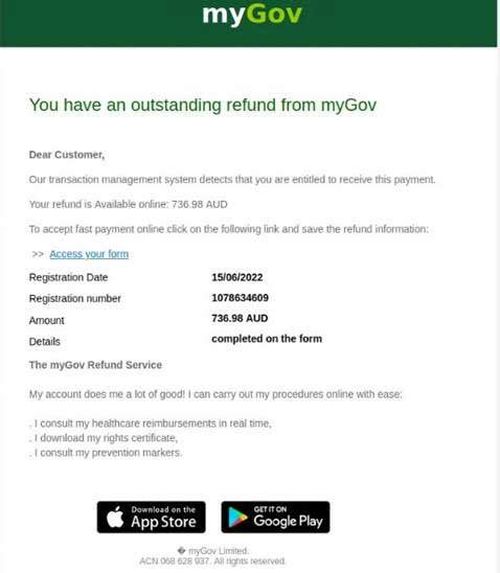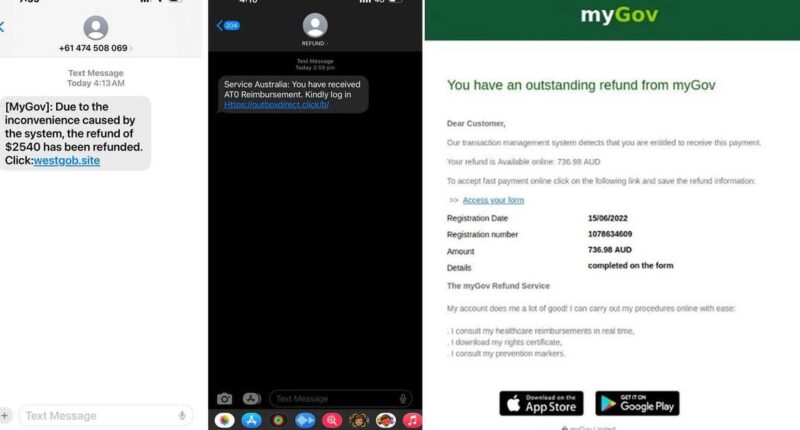The alert comes amid new research which shows that while Australians are overwhelmingly confident about their ability to identify scams, around a third failed to identify at least one when tested.
The research, commissioned by the Commonwealth Bank, shows nine in ten of adults surveyed were confident they could spot a fake SMS or email.
However, when they were tested with three examples of tax scams, only 69 percent successfully identified all of them.

This was the easiest scam to spot, with all but 4 percent of respondents easily identifying this text message as a fake.

This scam was also relatively easy to identify as a trick, with only 7 percent of respondents failing to spot it as a suspicious message.

The hardest to identify by far, this example of a scam tricked 28 percent of respondents, who believed it to be a legitimate message from MyGov.
The research also showed that around one in four Australians have been exposed to a tax-related scam.
Last year, the Australian Tax Office (ATO) received more than 22,000 reports of tax scams, with the numbers increasing from the end of the financial year to peak at more than 3500 in the month of October, around when most tax returns are issued.
James Roberts, CBA’s general manager of group fraud, said while it was encouraging to see the majority of Australians were confidently able to spot scams when tested, it was concerning that almost a third didn’t spot all of them.Â
“Scammers are the most opportunistic criminals and will actively campaign to capitalise on tax season,” Roberts said.Â
“Everyone should keep an eye out for text messages and emails impersonating myGov and the ATO.”Â
“They may appear in a thread of legitimate messages from these organisations. The major red flag for this type of scam is the link, which differs considerably from the official myGov and ATO website addresses.”
Phishing scammers use SMS messages or emails impersonating well-known businesses or government organisations. The messages will include a link to a fake website which might look very real.
Once directed to the website, consumers will be asked to enter their card details and other personal information.
According to the National Anti-Scam Centre, phishing is the third most common type of scam, behind only investment and romance scams.
So far this year, Australians have reported almost $4.7 million in losses to phishing scams, with the average victim losing around $2000.
Tips to avoid phishing scams:
⢠Stop – consider whether a call, email or text seems suspicious. Legitimate
organisations won’t put you under pressure to act immediately.
⢠Check – ask someone you trust or contact the organisation on a verified number. Do not rely on contact details provided by the potential scammer.
⢠Reject – if you are unsure, hang up on the caller, delete the email, and block the phone number.









